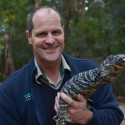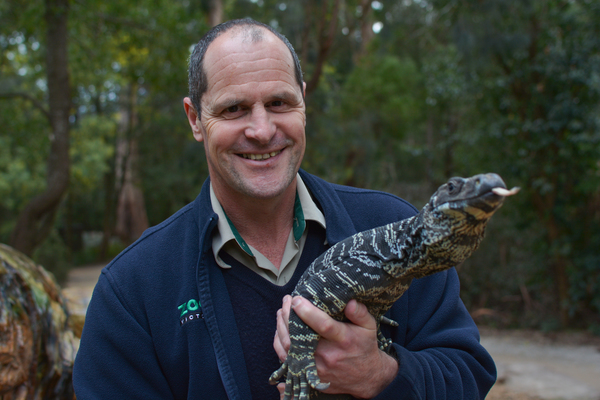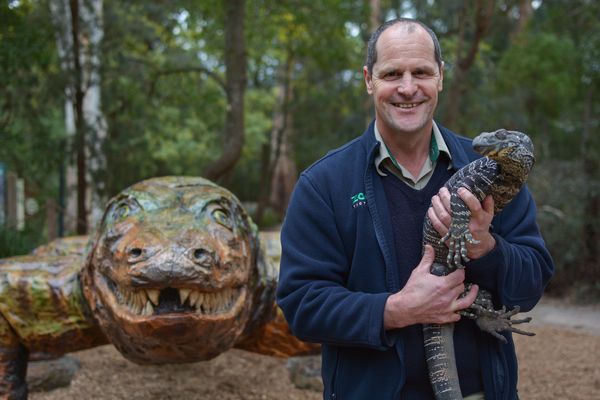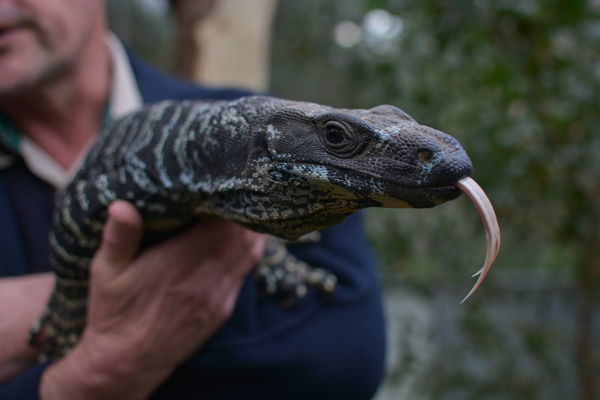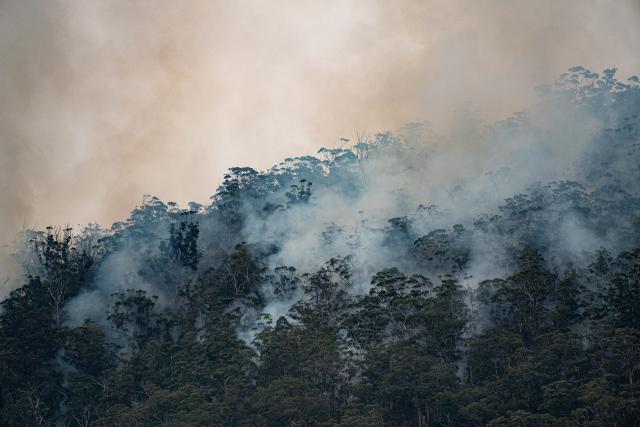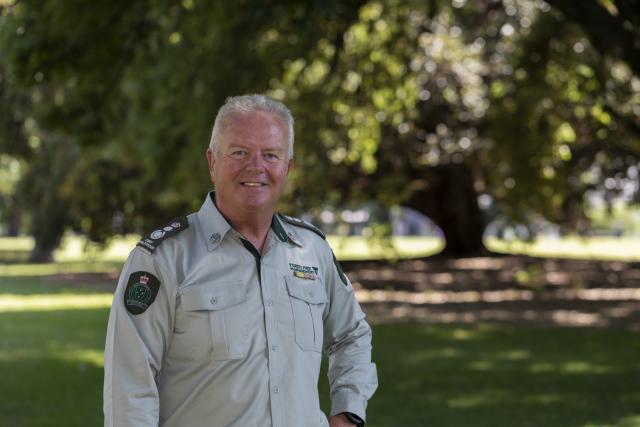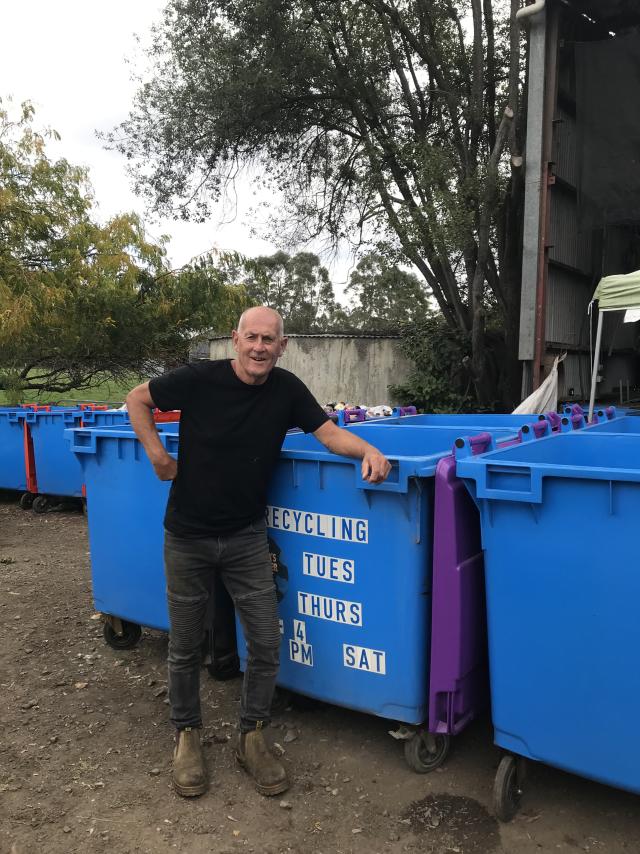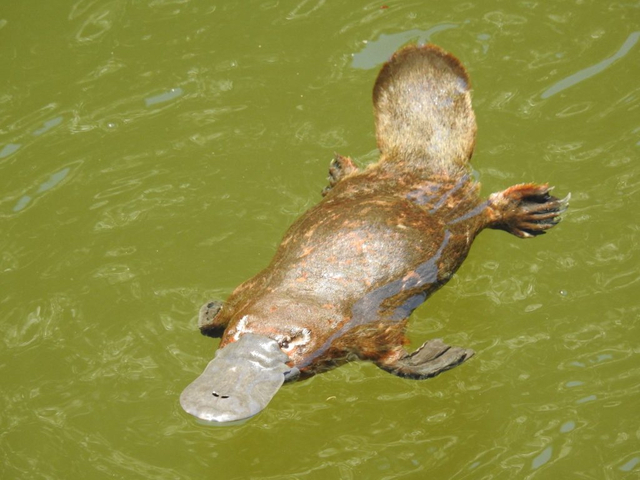By JESSE GRAHAM
IT was a case of being in the right place at the right time that kicked off Michael Taylor’s 30-year stint working alongside Healesville Sanctuary’s reptiles.
Sitting on the corner of his desk for his interview at the sanctuary’s reptile house, every bit in his element, Mr Taylor, 51, said he started out volunteering while working as a lab tech at the Austin Hospital.
After spending every second weekend at the sanctuary for months, he was offered a job on 2 May, 1985.
“At that stage, like a lot of my colleagues at the time, we were getting in by just coming up and volunteering,” he said.
“I don’t even recall having a formal interview – it was just that I happened to be here, in the right place at the right time – one of the reptile keepers left and I was virtually just offered his job.”
The opportunity to work with reptiles was a dream come true for Mr Taylor, who said he was enthralled with dinosaurs and reptiles from his childhood.
“I knew even by the time I started high school, I was fixated on being a zookeeper, particularly working with reptiles,” he said.
“I was always out, collecting bugs, catching things all of the time – it was my number one interest, always has been.”
Though his first day wasn’t necessarily his first with the reptiles, as he was told to broaden his interests in the sanctuary’s other residents.
“My first five years here, I did everything but reptiles,” he said.
“They said ‘Mike, you don’t know anything about anything else but reptiles – you’ve got to go and work with everything else’,” he said.
“I persevered for five years … and in 1990, I started here and I’ve been here ever since.
“This is my home away from home.”
His ‘home away from home’ is the area behind the reptile house – an office connected to a long corridor, featuring enclosures for snakes and reptiles, marked with whether or not they are venomous.
Through his last 25 years with the sanctuary’s reptiles, Mr Taylor said his ‘crusade’ had been about changing public attitudes towards reptiles, particularly venomous snakes.
One way to do this, he said, was by using them in public demonstrations and keeper talks, to emphasise that the animals weren’t inherently dangerous.
“Seeing you out there with a tiger snake with you has a big impact on people, because they see it’s just an animal that the keeper is holding, just like a keeper holding a koala,” he said.

“One of the things that always made my day – and this happened numerous times – was particularly older people who would come up at the end of my talk and they’d say things like ‘You know, I’ve lived all my life in fear of these animals, and today I can walk away with a completely different view of them.’
“For me, that meant a lot – I thought, yeah, that’s what I set out to do.”
He said that education around venomous snakes and reptiles was “easy” for children, but that it was harder to shake the views of older visitors.
“It’s easy to convince the kids they’re OK, but you have to get past their parents and their grandparents,” he said.
“You’d see people come in with a degree of trepidation and that old ‘A good snake is a dead snake’ mentality – that was my challenge, that’s what got me to work every day.”
Mr Taylor said that he believed venomous snakes were the “underdog”, due to public fear of them, and that he tried to break down attitudes about them, by educating people about them and what to do if spotting them around the home.
However, with Occupational Health and Safety laws and the potential for legal consequences, Mr Taylor said the directive recently came down from the top at Zoos Victoria for staff to no longer handle venomous snakes in public talks.
“About a year ago, the word came down from our CEO that we were no longer allowed to use venomous snakes in our presentations,” he said.
“The worst case scenario, obviously, involves death, and that’s when your managers have a lot of questions to answer – to be honest, they can end up in prison, and the organisation, including the individuals themselves, can be fined hundreds of thousands of dollars in regards to workplace deaths.
“I understand the reasons – I’m not happy with it, but I do accept it, because, you know, they are a potentially very dangerous animal and there are serious consequences.
“I don’t enjoy my job any less.”
“..for me, it’s about raising the profile of a group of animals that, in the case of the snake, do have an obvious, dangerous side – but making people aware of what makes them dangerous, and making people understand that there is no need to see them as monsters.” – Michael Taylor.
Though he continues to try and raise awareness about reptiles through his talks, he said his ‘reason to get out of bed in the morning’ was Chantilly, a lace monitor goanna, who was brought into the sanctuary in 2004.
The name was supposedly inspired by Chantilly lace and a song, when Mr Taylor and other keepers thought the goanna was a female – they later found out that Chantilly was a male, but the name stuck.
Chantilly was a week old when he was brought in, and Mr Taylor said the keepers knew he would be a “very hands-on” animal, after discovering an apparent brain defect, which stopped Chantilly from catching food.
“There was no sign of any physical trauma, so I tend to lean towards maybe a birth defect – that something went wrong in the head development and he’s been born not-quite-right,” he said.
“Anyway, it was quickly obvious to us that he was never going to be able to be released, certainly not as a hatchling, so we got involved in raising him.”
Mr Taylor said that, in his 11 years of raising Chantilly, the goanna had not shown signs of aggression or trying to bite, meaning he has been able to meet visitors up-close and has since become an unofficial ambassador for the reptiles at the sanctuary.
“I’ve had baby lace monitors try to rip my fingers off as soon as they’re out of the egg – he’s never been like that, and I think that’s because he’s been born not-quite-right,” he said.
“I always enjoyed working with the big fellas we had, but you just didn’t have close contact, because they’d hurt you and you respected that.
“But all of a sudden, here’s a goanna I can pick up, like a toy, and give people the experience of having contact with an animal that, normally, you wouldn’t get anywhere near.”
One of the benefits of this, he said, was getting to see children interact with the goanna and get excited about learning about the reptiles.

He said it all goes back to his crusade, and that, while he likes interacting with people who have an interest in the animals, they aren’t his main audience.
“I would much rather speak to the people who aren’t just afraid, but who hate them – they’re the people I want to take hold of, and get into their head, because that, for me, was my role,” Mr Taylor said.
“For a lot of the other keepers, now we’ve got a big, threatened species department, and it’s a huge thing at Zoos Victoria now, fighting extinction.
“But, for me, it’s about raising the profile of a group of animals that, in the case of the snake, do have an obvious, dangerous side – but making people aware of what makes them dangerous, and making people understand that there is no need to see them as monsters.”
Mr Taylor’s passion for reptiles seems to have rubbed off on his family – he said his son is already showing a strong interest in animals, himself.
“There’s no-one else in my family that I’ve inherited it from, to be honest – it was just there, I had this passion for it,” he said.
“It’s funny, you know, I have a young son now and I look at him and I realise that this is what I was like.
“You sort of forget when you’re an adult, what you were like until you see a little version of yourself going through the same thing and think ‘jeez, this is me’.”

